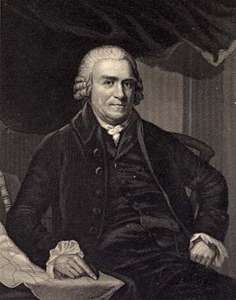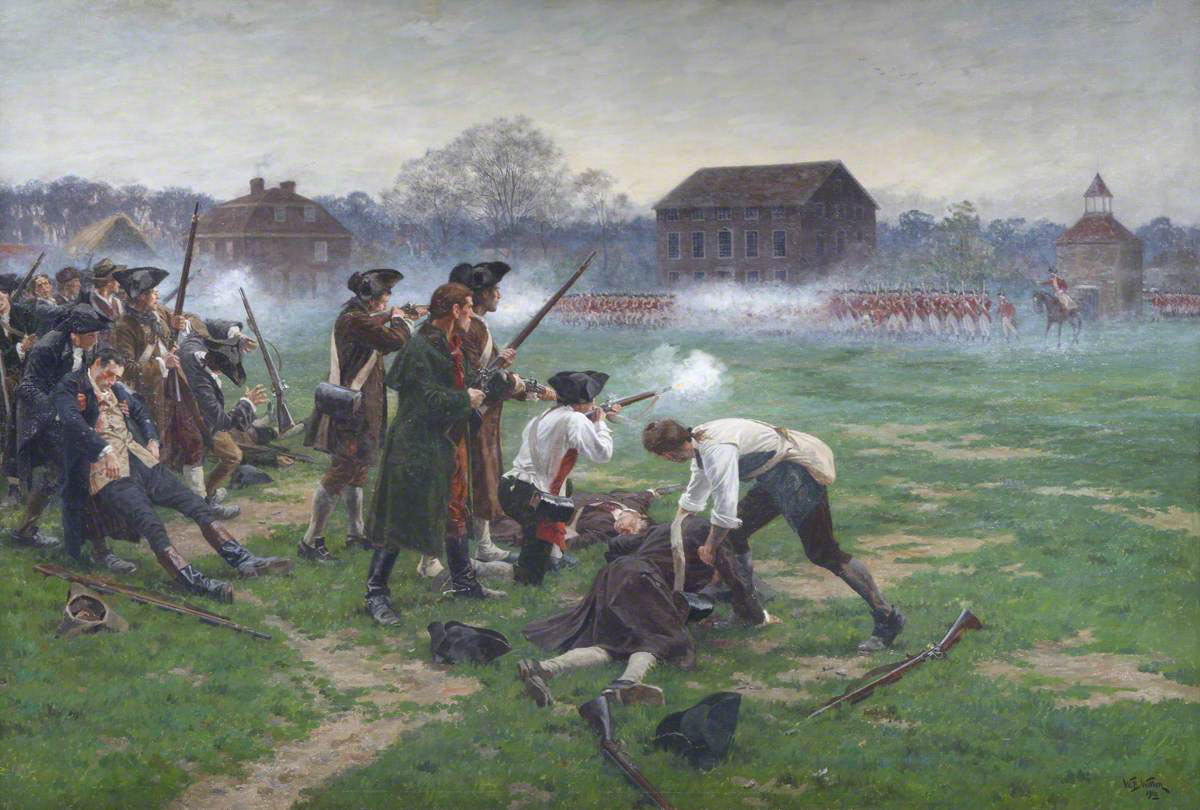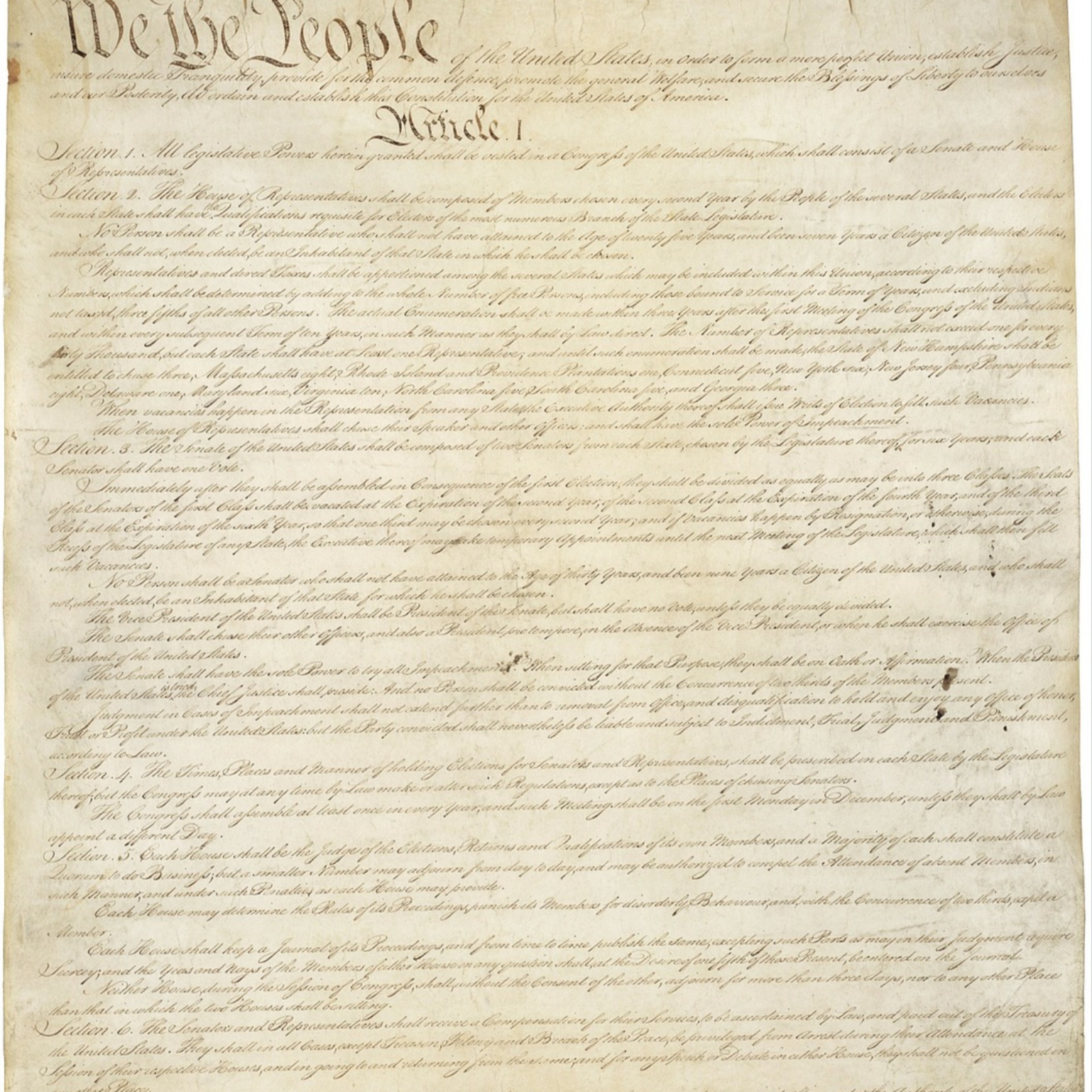Second Amendment - History
In an era where the extent of atrocities committed by mass shootings are thoroughly covered by the media, debates have been sparked about gun control and regulations.
The debate itself is international, with the Dalai Lama stating, "If someone has a gun and is trying to kill you, it would be reasonable to shoot back with your own gun" (qtd. in Snopes) and Former New York Governor Eliot Spitzer arguing that, "Yes, people pull the trigger - but guns are the instrument of death. Gun control is necessary, and delay means more death and horror" (qtd. in Brainyquote). These claims, whether pro-gun control or anti-, are centered around the Second Amendment, which reads, "A well-regulated Militia, being necessary to the security of a free State, the right of the people to keep and bear Arms, shall not be infringed" (US Constitution). To understand the Second Amendment to a deeper extent, one must recognize the historical events that led to its adoption and the United States Supreme Court's interpretation of it since its inception through Supreme Court cases that are, to this day, relevant to the amendment.

To begin, the historical events that built to the adoption of the Second Amendment is detrimental in understanding its context. Founder Samuel Adams, upon entering the Massachusetts convention, proposed that "the Constitution shall never be construed to prevent the people of the United States who are peaceable citizens from keeping their own arms" (qtd. in Halbrook). In a synopsis of his own book, "The Founders' Second Amendment", Stephen P. Halbrook explains that Adams was met with support from the Antifederalists and dismissal from the Federalists - rather than differing on the right to keep private arms, they differed in whether such a blatant right needed to be written in a formal document.
The origins of this right began during America's revolutionary moments. In 1768, news spread that the British were sailing to occupy Boston. A British pundit stated that "the Inhabitants of this Province are to be disarmed" and the Patriots "are to be seized and sent to Great-Britain" (qtd. in Halbrook). The Patriots spread the word of Britain's intentions, and once the British came into Boston, a series of conflicts led an eventual explosion.
The Boston Massacre, for example, was a deadly uprising in 1770 between "American colonists and a lone British soldier...[that] energized anti-British sentiment" (HISTORY sec. Boston Massacre). It established the Patriot's commitment to defend themselves, by arms if need be. As Britain placed more repressive measures on Boston - such as the tax on tea - conflict escalated. The royalist-imposed government in Boston began to debate on prohibiting private arms, leading the British General Thomas Gage to use his troops to seize the Boston powder houses, effectively cutting off the gun powder supply for the Patriots. The British military would continue to conduct searches, seizures, and entrapments to those who were found obtaining or distributing arms. King George III, aware of the Patriot's persistence in arming themselves, placed an arms embargo between the colonies and nations that previously sold firearms to them, such as Britain and Holland.

The eventual explosion occurred at the Battles of Lexington and Concord, leading Gage to confiscate firearms. At first, the confiscation was towards the militiamen but spread to civilians when they protested with their private muskets and sporting arms. Gage made a promise to the people - if they complied and handed over their weapons, he would let them leave the besieged city. When the people complied, he broke his promise, holding the townspeople hostage. News of this broken promise and infringed right spread throughout the colonies, justifying the start of the Revolutionary War. In 1776, US independence was declared, and states began to adopt bills of rights.
Some included the right to keep and bear arms, while others were skeptical of its inclusion, deeming "it unnecessary to list the many rights of mankind in a formal instrument" (qtd. in Halbrook). Virginia was the first state to include the right to "a well-regulated Militia, composed of the Body of the people" (qtd. in Halbrook).
In 1787, the Constitution was proposed at the Philadelphia convention without a bill of rights, triggering a debate. At first, the Federalists won the debate in excluding a bill of rights. However, a compromise was later made: The Constitution would be ratified, and a bill of rights would be written and adopted later. Soon, most of the states were in favor of such a bill. In 1789, James Madison proposed the Bill of Rights, including the Second Amendment. Federalists explained the inclusion of the Second Amendment, saying that it would protect the right to keep and bear private arms to protect against tyranny and a standing army (Halbrook).
While the Federalists interpreted the Second Amendment at the time of its adoption, the US Supreme Court led to a change in the interpretation of the Second Amendment since then.
Before 2008, there hasn't been serious consideration of the Second Amendment's Constitutional scope (Britannica). The first-ever hearing on the Second Amendment was in 1886 through the court case Presser v. Illinois. The Supreme Court held in Illinois that the Second Amendment prevented states from "prohibit[ing] the people from keeping and bearing arms, so as to deprive the United States of their rightful resource for maintaining the public security" (qtd. in Britannica). It set a precedence for the next four decades in preventing states from infringing on the Second Amendment.
It was in United States v. Schwimmer (1929), where the Supreme Court expanded the interpretation of the Second Amendment, citing it as protecting the duty of the individual "to defend our government against all enemies whenever necessity arises" and they held that "the common defense was one of the purposes for which the people ordained the established the Constitution" (qtd. in Britannica). The Second Amendment expanded from the right of the individual in pursuing public security to include the right to defend the government and puruse common defense.
A decade later, in United States v. Miller, in a prosecution under the National Firearms Act (1934), the Supreme Court avoided addressing the entirety of the Second Amendment, simply ruling that the "possession or use of a shotgun having a barrel of less than 18 inches in length" was not "any part of the ordinary military equipment" protected by the Second Amendment (qtd. in Britannica). In this instance, the US Supreme Court placed a limit on what is protected under the Second Amendment, that being "ordinary military equipment".
A more recent Supreme Court decision occurred in District of Columbia v. Heller (2008). In Heller, the US Supreme Court scrutinized the Second Amendment. Richard Heller challenged a law banning handguns on the grounds of the Second Amendment, feeling that it made it nearly impossible for self-defense. The District of Columbia argued that the Second Amendment was limited to weapons for military service (Bill of Rights Institute). In a 5-4 majority, it was ruled that self-defense was the "central component" of the amendment and that it was unconstitutional for the District of Columbia to prohibit "against rendering any lawful firearm in the home operable for the purpose of immediate self defense" (qtd. in Britannica). Since then, a precedence was set by the US Supreme Court, where it was ruled that the Second Amendment acknowledged the right to self-defense with the use of firearms.
Thus, the Second Amendment was originally mean for protection, whether that be for the self, for the nation, or for the government. The general idea has been maintained, being centered around "defense". In understanding today's debate, it is essential to understand the paradigm that existed in the late 1700's, and the intent and purpose of explicitly scribing a right that was, during that time, viewed as obvious. As the debate ensues, understanding where the debate began will aid in bringing a deeper understanding as both parties pursue a common goal.
Works Cited
- Editors, History.com. "Boston Massacre." History.com, A&E Television Networks, 27 Oct. 2009,
www.history.com/topics/american-revolution/boston-massacre.
- Halbrook, Stephen P. "The Founders' Second Amendment: Origins of
the Right to Bear Arms." ,
The Independent Institute, 2008,
www.independent.org/publications/books/summary.asp?id=72.
- "District of Columbia v.
Heller (2008)." Bill of Rights
Institute, 2008, billofrightsinstitute.org/educate/educator-resources/lessons-plans/landmark-supreme-court-cases-elessons/district-of-columbia-v-heller-2008/.
- Duignan, Brian. "District
of Columbia v. Heller." Encyclopædia
Britannica, Inc., 9 Oct. 2018, www.britannica.com/event/District-of-Columbia-v-Heller.
- "Second Amendment -
Constitution | Laws.com." Constitution, Laws, accessed Feb 1 2019, constitution.laws.com/american-history/constitution/constitutional-amendments/second-amendment.
- Mikkelson, David. "FACT
CHECK: Dalai Gun." Snopes.com, Snopes, 10 Oct. 2015,
www.snopes.com/fact-check/dalai-gun/.
- "Gun Control Quotes." BrainyQuote, Xplore, accessed Feb 1 2019,
www.brainyquote.com/topics/gun_control.
- US Constitution. Amend. II

